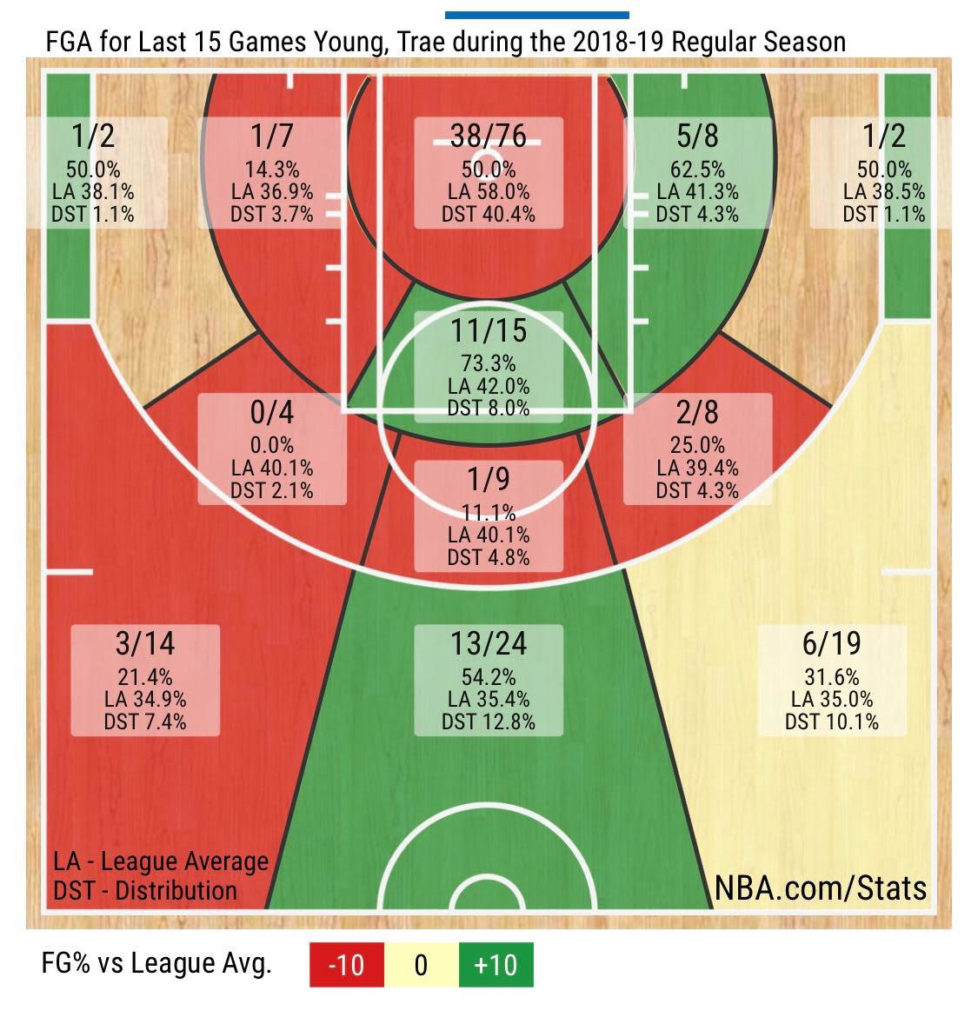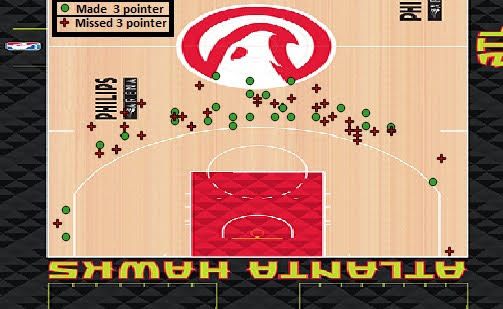In the first month of his NBA career, Atlanta Hawks point guard, Trae Young, put the NBA world on notice that he was there to make some noise. The rookie averaged 19.1 points per game and dished out 6.6 assists per game with shooting splits of 43 percent from the field, 34 percent on three-pointers, and 76 percent from the free throw line. He boasted a true shooting percentage of 55.2 percent through his first seven games.
The team wasn’t winning many games, but Young was doing his best to silence any doubters and critics. His 35-point, 11-assist explosion against the Cavaliers in his third game–and consequently, Atlanta’s first win–was the crowning jewel in an October for the ages.
Then came November.
Young’s scoring dipped down to 14 points per game, his shooting cratered to 36 percent from the field and a woeful 19.8 percent from behind the arc. Suddenly, the kid who was being billed as the next Stephen Curry couldn’t get the ball to go through the net.
Rookie walls are a well-known trope in the league, however, rarely do we see someone hit one this early in their debut season. After the extended slump–Young shot 89 three-pointers over the course of 16 games in November and made just 17–most seem to write off Young’s outside shot. Claims were made that without Lon Kruger’s neon greenlight Young wasn’t as special of a shooter as he’s been hyped to be during the pre-draft process.
The inconsistencies from deep continued into December, which saw an abysmal 0-for-6 performance against the Boston Celtics and a game against the New York Knicks where Young didn’t attempt a single three-pointer in the entire game.
Yet, Young has climbed out of rock bottom as of late. His 29.5 three-point shooting percentage on the season looks porous at first glance, but by taking a step back you find that for the month of January Young is connecting on a career-high 37.8 percent of his triples (while attempting a career-high 5.6 per game over this current eight-game stretch).
Prior to the Hawks games against the Milwaukee Bucks and Oklahoma City Thunder, here’s two shot charts that represent Young’s shooting prowess over the previous 15 games for Atlanta.


In the first chart, you can see that Young has found his comfort zone shooting from the top of the key. This bodes well for the Hawks as Lloyd Pierce’s wish to push tempo combined with the number of high ball screens Young receives in the halfcourt make this area somewhere Young will find himself in often.
He shot 52.4 percent from the top of the key in those 15 games, the league average is 35.4 percent. For comparison, James Harden is shooting 38.7 percent on the season from the same spot.
If Young can continue to maintain his success from the top of the key it helps draw defenders further away from the paint and with Young’s passing acumen being second to none he can adeptly find his teammates in the newly open space his outside shooting creates.
In the second chart, you get a better representation of where exactly Young’s three-point attempts were coming from on the floor.
In college, Young’s propensity to take shots well beyond the college three-point line resulted in his overall three-point percentage dropping. According to CleaningTheGlass, Young shot 26 percent at Oklahoma on three-pointers deep threes (categorized as three-pointers taken from 30 feet or further).
In his rookie season that number has surged to 42.8 percent from 30 feet or deeper.
It’s been his attempts from a “reasonable” distance that have faltered so far. From 24-29 feet Young is only connecting on 27.7 percent of his three-pointers. That doesn’t seem like a trend likely to continue for the rookie. It seems that the length, physicality, and strength of the pros has taken its toll on the smaller Young as defenders can more easily effect his shot the closer he is to the three point line.
Young might never live up to Curry-status, but the Hawks don’t need that. If Young can remain in the upper 30 percentile he has the makings of becoming the engine to Pierce’s offense similar to what we saw from Steve Nash during the 7 Seconds or Less Phoenix Suns era.
